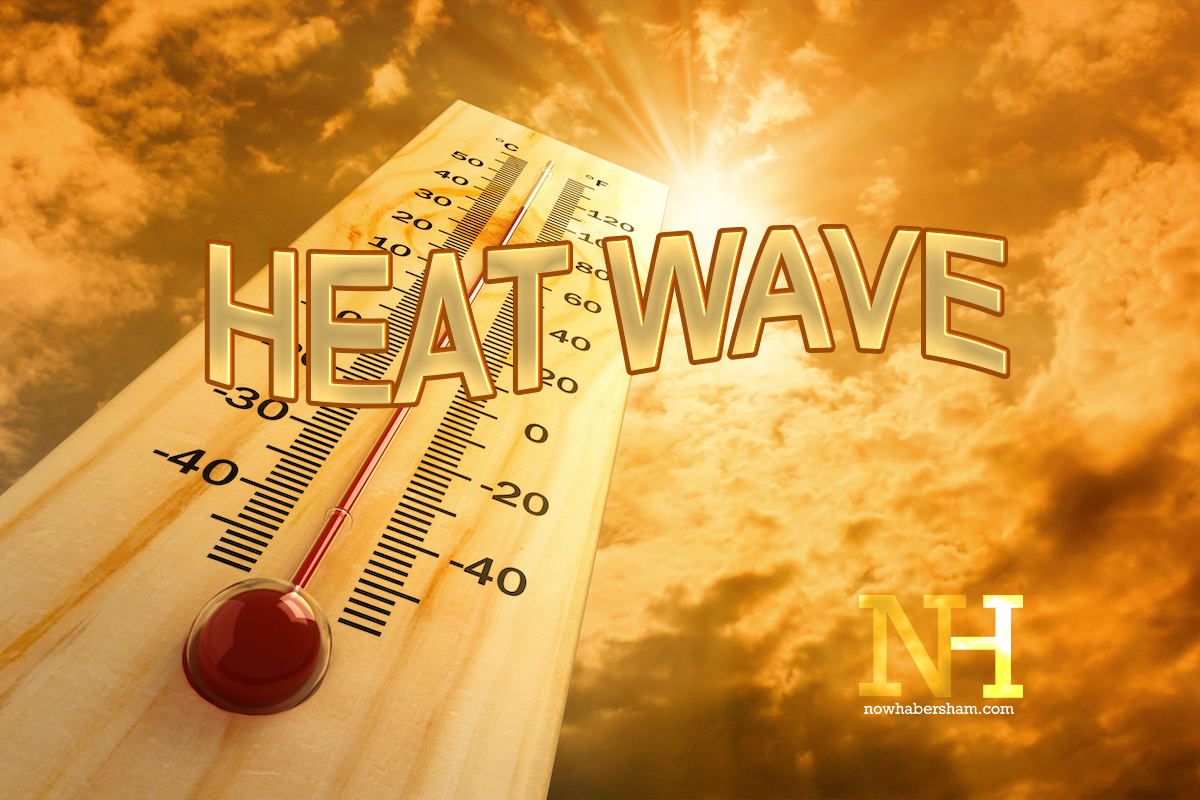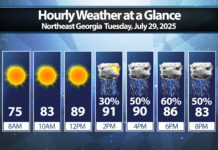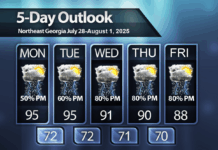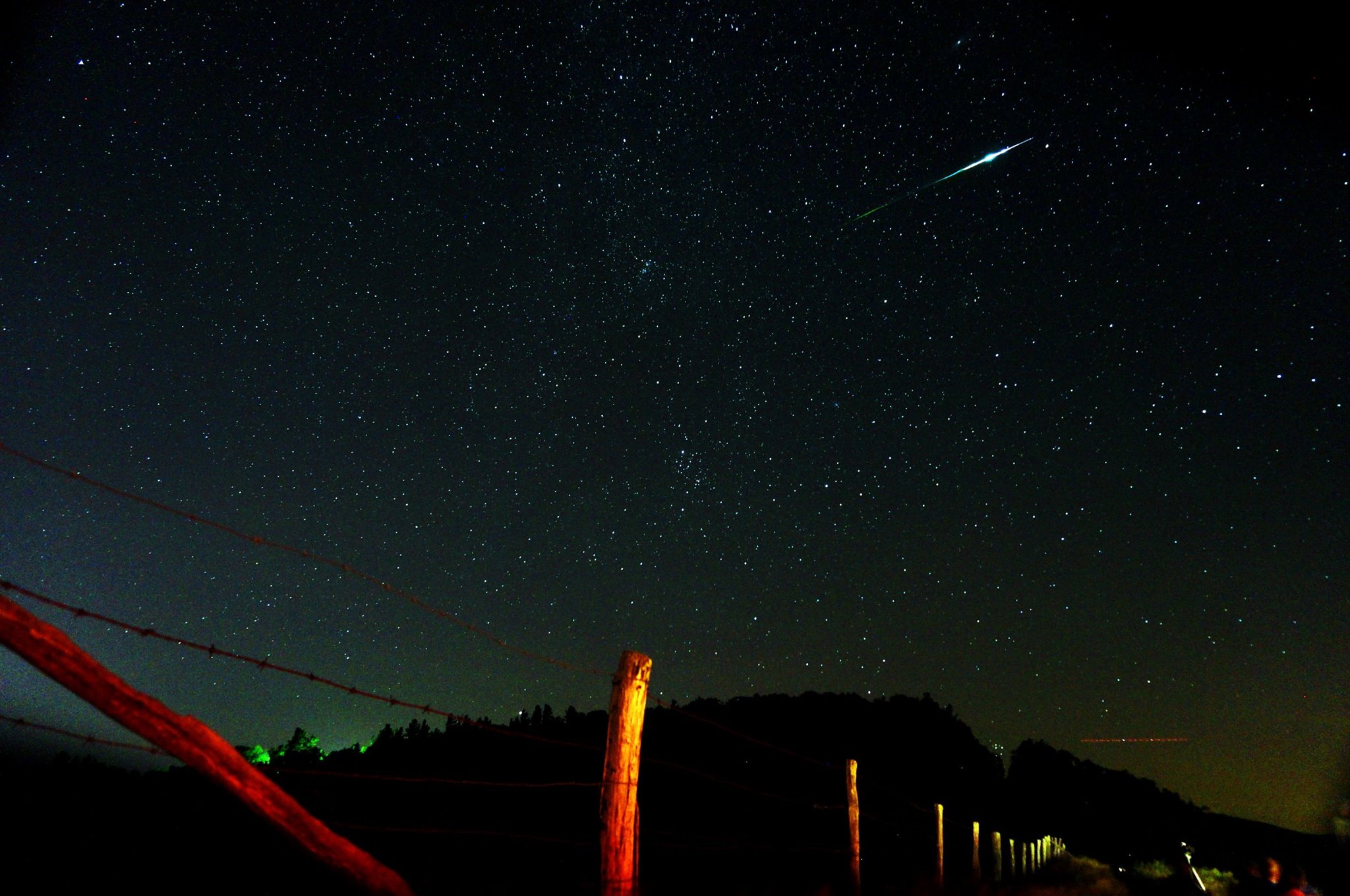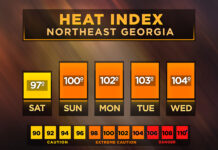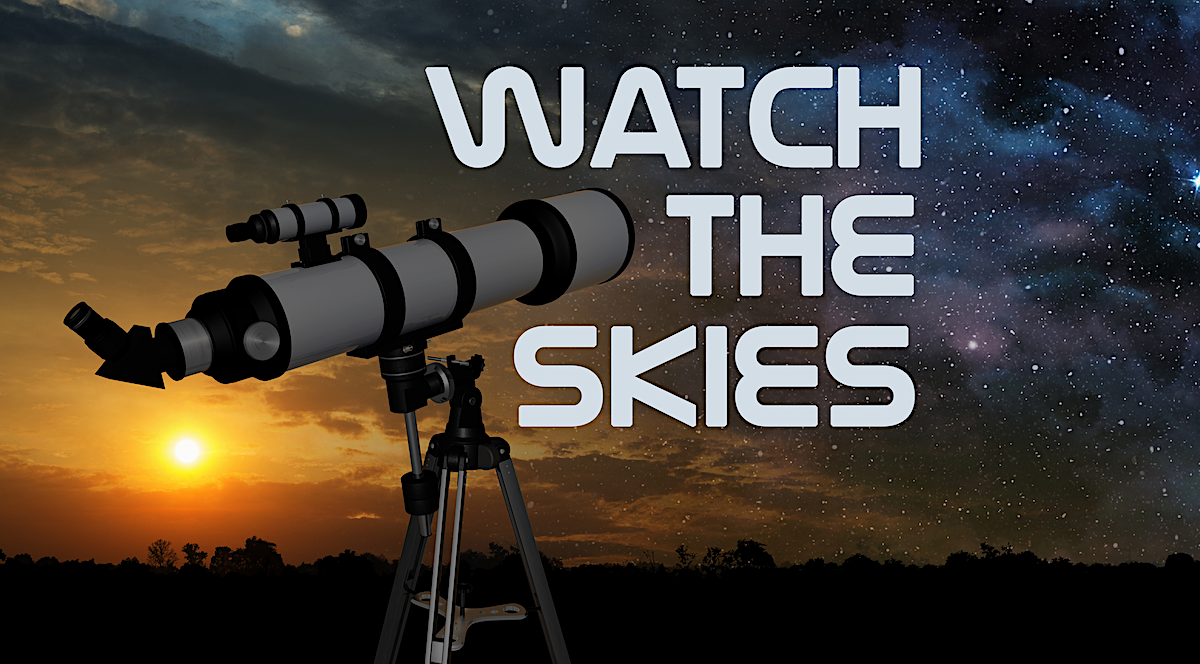
June turned out to be a pretty exciting month with a meteorite reaching the ground here in Georgia. Will another one hit in July? Who knows, they are entirely impossible to predict, but here’s some things that we do know will happen you can check out!
Lunar Happenings
July 3: On this eve of Independence Day you can spot the moon right next to Spica just after sunset. Spica is a bright, blue star in the constellation Virgo. Spica is actually a binary star system, but we are only able to see the main blue giant with our eyes.
July 6/7: The moon will meet up with Antares on both these nights as it races towards its full stage. It will be visible after dark in the southwest sky.
July 10: The Full Buck Moon occurs on the evening of the 10th. You may have noticed last month that the moon is taking a very low arc through the sky. This is due to an 18 year cycle where the moon rises higher and lower with time. 2025 is the lowest year until 2043, and June actually saw the lowest full moon until then. Don’t worry, though, this month’s moon will still be very low in the sky before it gradually works its way up through the next 9 years! Look for some nice yellow/orange color that will last a bit longer thanks to the high humidity we usually see this time of year and the low arc near the horizon!

Image Credit: NASA
July 16: This might be my favorite conjunction of the month, although you will have to stay up late to catch it. The Moon, Saturn and Neptune will all be under blanket when they rise a bit after midnight. You’ll need a telescope to see Neptune, but it should be just barely visible through a small telescope in the glare of the moon. It’s location between the moon and lovely, currently ringless, Saturn will make it easy to find.
July 22/23: For the early risers out there, the moon will be next to Venus on the morning of the 22nd, and Jupiter in the morning of the 23rd. Jupiter actually won’t be easily visible until late month as it moves out from behind the sun from our perspective. It will gradually get higher in the sky through next January when it reaches it’s “opposition” and we sit directly between it and the Sun.
July 30: The moon will end the month the same way it started: right next to Spica in the evening sky!
Delta Aquarid Meteor Shower
We are nearing the peak of summer meteor season and the Delta Aquarid Meteor Shower is a nice warm-up event for the August Perseids. While it doesn’t have a particularly well defined peak like many showers, it will reach the maximum meteors around July 29/30. Like most showers, it is best after midnight until dawn. This year we won’t be competing with the moon, so the full 15-20 meteors per hour will be easier to come by.
The radiant comes from a fairly dim star, so you can use the constellation Pegasus and the bright star Fomalhaut to find the radiant point. You won’t need to be able to pinpoint this to see the meteors, though, they can appear anywhere in the sky and trace back to this point. You’ll likely also see a few early Perseids as well, so reaching 20-25 meteors per hour should be fairly easy from a dark sky site!
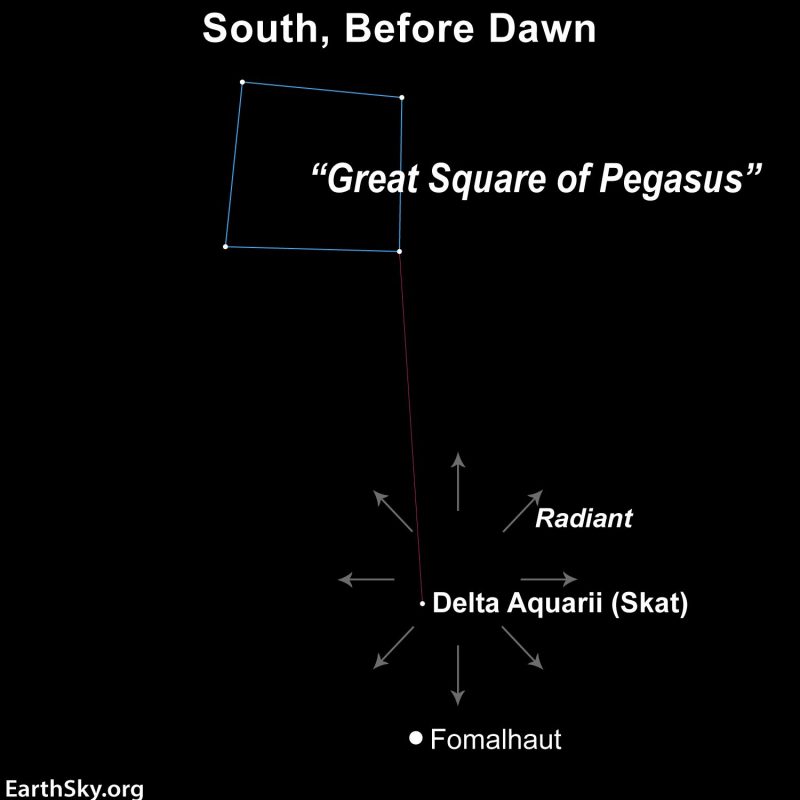
Summer stargazing is always a great time, so head out and enjoy the warm nights!

